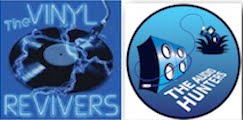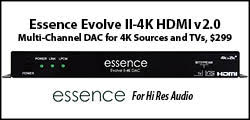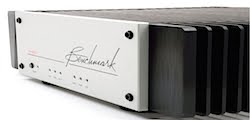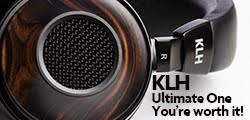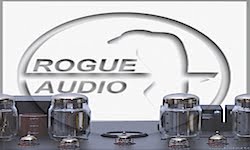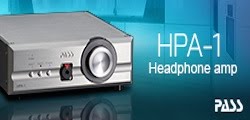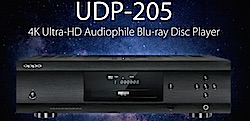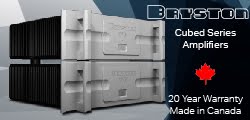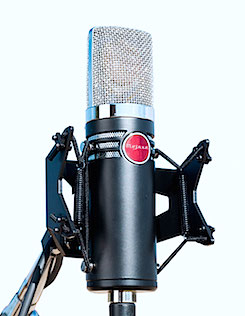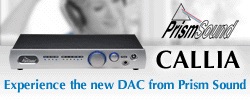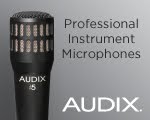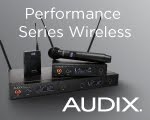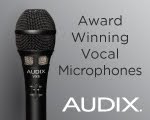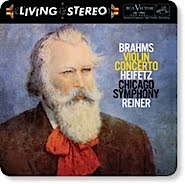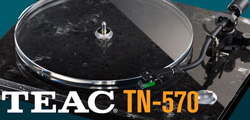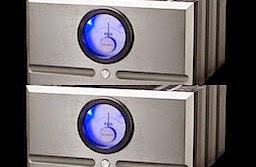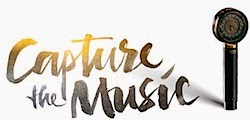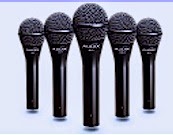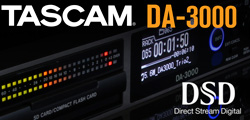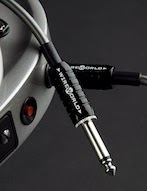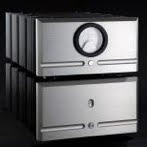 |
| ©Everything Audio Network |
Brevis...
Price $2,499 per pair
Likes; exquisite ML sound, price
Dislikes: you can’t dislike this speaker
by John Gatski
It is no secret that I am a big fan of MartinLogan electrostatic speakers. I own a pair of the Montis and have reviewed it and the the ML flagship: the Neolith. Electrostatic speakers, set up correctly, relay a vast sense of sonic space that is addictive in the world of hi-fi listening.
It is no secret that I am a big fan of MartinLogan electrostatic speakers. I own a pair of the Montis and have reviewed it and the the ML flagship: the Neolith. Electrostatic speakers, set up correctly, relay a vast sense of sonic space that is addictive in the world of hi-fi listening.
Over the last few years MartinLogan has been able to take advantages of its newer electrostatic technology advances in bass woofer (powered and passive) and digital crossovers to bring their electrostatic speakers down to affordable levels. the case in point is the MartinLogan ElectroMotion EM-ESL reviewed here, priced at a shocking $2,499 per pair!
Electrostat’s rule
To you electrostatic newbies, electrostatic technology has been around for years. These speakers produce audio by electrically charging the steel perforated stator with an audio signal. Because of the low-mass of the electrostatic-panel driver and its dipole radiation properties, the driver’s essential audio character has been one of a vast stereo image with a fast, accurate tone in the midrange and treble — without multiple drivers and complex crossovers.
I quickly realized that the under-$2,500 EM-ESL electrostatics sound nearly as good as my $10,000 Montis. In my room, those live-like drum cymbal brushes and upper-register piano notes emerged in a wide, deep soundstage — but not exaggerated.
In the early years of electrostatics, bass performance did not match the upper band, but over the years, developments in driver efficiency, powered woofers, etc., has provided bass performance that now precisely matches the speed of the electrostatic driver.
The EM-ESL is a result of all ML’s continual progress in making electrostatic speakers. And it offers an upscale, sonic presentation for small-to-medium rooms at a ridiculously low per pair price under $2,500.
Features
The EM-ESL is built with a full-sized, 34-inch tall, curvilinear XStat electrostatic transducer that offers performance that is comparable to their upscale models. The MicroPerf transducer is mounted on a radical aluminum and composite AirFrame similar to those found on MartinLogan's flagship products. According to ML, AirFrame technology “rigidifies” the electrostatic panel without obstructing the playable surface area or interfering with ambience-enriching dipole sound radiation. At the same time, the AirFrame is said to provide electrical and acoustical isolation, minimizing intermodulated distortion caused by vibration and resonance.
 |
| The MartinLogan electrostatic Curvilinear panel |
Employed in most ML electrostatic designs, the MicroPerf design optimizes the individual holes of the EM-ESL's electrostatic panel. The MicroPerf design substantially increases diaphragm radiating area, compared to the early ML generations, without compromising structural integrity. The resulting increase in output capability and efficiency allows the EM-ESL's panel to project extended bandwidth and dynamics.
Like every other modern ML electrostatic, the company's patented CLS™ (Curvilinear Line Source) technology enables construction of electrostatic panels as cylindrical sections and, most importantly, the horizontal curvature of the panel solves the problem of obtaining good high-frequency dispersion from a large radiating surface. And that is obvious when listening through ML speakers; I monitored off axis with EM-ESL and did not hear significant HF roll off.
To balance out the wonderfully, airy spectrum of midrange and high-end sound, the EM-ESL supplies low frequencies via an 8-inch, high-excursion, audiophile-grade, doped-fiber cone woofer — custom designed by MartinLogan's in-house engineering team. Via the front-firing woofer, augmented by a bottom-mounted, flared port, that can reach nearly 40 Hz. Which is plenty low for most kinds of music.
Overall, specs include a 42 Hz to 22 kHz frequency response (plus. minus 3 dB), 91 dB sensitivity (91 dB/2.83 volts/meter), 500 Hz crossover. Recommended power is 200 watts or higher. The EM-ESL measures 52.1 inches tall x 9-inches wide x 16.3-inches deep at the woofer box. Weight is a very light 35 pounds, easy to unbox and set up solo. The frame and woofer box come in satin black and gloss black finishes.
MartinLogan also offers the EM-ESLX, which nets an additional woofer, and 6-inches more of panel surface. It is priced at $3,999 per pair
The set up
I Installed the MartinLogan EM-ESL in my audiophile listening room: about eight feet apart, six feet from the side walls, and three feet from back walls. I angled them in slightly, per the manual. Since electrostatics radiate from both sides, the wall behind the speaker is a vital part of the sound. Close proximity to the front wall allows for necessary reflections to make the electrostatic radiate its sound properly.
Since my floor is a solid concrete slab with a bit of carpet in the speaker mount area, I did not attach the supplied spikes. My own RTA bass response measurements was quite clean in the bass frequencies — down - 2dB at 45 Hz.
 |
| The 8-inch woofer gets a boost from bottom-mount port |
Since electrostatic speakers need current, a pair of wall-wart DC adapters come standard with the speakers. Just plug then into wall. outlet. And the bottom-mounted speaker terminals offered plenty of space to plug in my Wireworld Eclipse premium speaker cables.
Two amp options powered the review speakers: the Rogue Audio Medusa tube/digital hybrid, a perfect match for electrostatics with its precision transient performance and signature linear frequency response. The other amp was a Pass Labs X350.8 high-power MOSFET output stereo amp — with its velvet, analog finesse and tubelike smoothness.
Other components used in the review process, included an Oppo BDP-105 universal player, Mytek Digital Brooklyn DAC/preamp, an Oppo HA-1 DAC/Headphone Amplifier, Rogue Audio RP-5 preamplifier, Coda High Current preamplifier, ASUS Android tablet with USB Audio Player Pro (super hi-res material), and a VPI Player turntable.
All analog and digital cables were Wireworld Eclipse, and I used Essential Sound Products Essence II component power cables.
For speakers, I compared the EM-ESLs to my MartinLogan Montis, a larger panel electrostatic with a powered 10-inch subwoofer. Other speakers in the test included Legacy Audio Studio HD ribbon tweeter monitors, Westlake LC8.1 stand speakers, and a pair of Pass Labs SR2 tower speakers.
The audition
To get things started, I played my 24/192 dub of the DMP SACD: Warren Bernhardt — So Real, and focused my listening on the title cut. The “So Real“ track is perfect for sorting out how well loudspeakers can relay a natural sense of sonic space. Its hi-res presentation of Steinway piano, bass and drums provides an-almost live stereo image with incredible air around the drum cymbals and snare. The piano rings out those Steinway harmonics like a bell. Even mediocre speakers are graced by this recording, but exceptional speakers like the ML EM-ESLs are something else.
With the Rogue audio powering the EM-ESLs, I quickly realized that the under-$2,500 electrostatics sound nearly as good as my $10,000 Montis. In my room, those live-like drum cymbal brushes and upper-register piano notes emerged in a wide, deep soundstage — but not exaggerated. Just more expansive.
And the eight-inch easily handled the essential kick drum and up-right bass. In fact, for this recording the bass from the EM-ESL was just slightly less impactful than the active 10-inch woofer in the Montis. The Montis’ were a lot more money, and they contain a bigger, powered woofer. To be this close is amazing!
Switching to The Bach Solo Cello Suites — Janos Starker SACD (Mercury Living Presence), again, the EM-ESL shined — fluid bow-to-cello strings harmonics with a complex depth that I would not expect for this price. I also heard that bit of room reverb and Mr. Starker’s ever-present breathing and the minute bits of background chair squeak that permeate the playback. So much dimension with this smaller electrostatic.
 |
| Slim, sleek, and the EM-ESL's superb sound! |
For small rooms that have ample back wall and side wall distance, I quickly came to the conclusion that a pair of EM-ESL’s are all the speaker many audiophiles would ever need. Sit down in your chair, dim the lights, pop the cork on the merlot, and let that hi-res music play. And did i mention that these speakers are under $2,500.
For a sampling of Pop music, I played the David Bowie — The Rise and Fall of Ziggy Stardust SACD. On the song “Rock and Roll Suicide,” the intro acoustic guitar/Bowie solo vocal emerges as big as life with a rich fullness on Bowie’s 6-string.
As far as EAN is concerned, the EM-ESLs are a best buy hi-fi audiophile speaker. With this much electrostatic performance, relative low price and compact size, the speaker is a no-brainer. They also get an EAN Stellar Sound and a 2016 Product of The Year nod in the Audiophile Speaker category.
Listening to the 24-bit hi-res version of Daft Punk’s "Get Lucky" hit, the Neo-Disco drum and electric rhythm guitar, courtesy of Nile Rodgers’ Fender Strat playing, was muscular enough with a solid kick drum performance and a generously spaced stereo image. Vocals were perfectly balanced without any of the tradition crossover/driver artifacts you hear on middle-of-the-pack conventional speakers.
I don’t like ultra-velocity Heavy Metal and ultra dense Pop on electrostatic speakers in my listening room, and the EM-ESL were no different.The dipole radiation of all the heavy guitar haze, at least in my room, is too much when you turn it up. I prefer recordings that are less dense.
That does not mean that loud recordings can’t sound good. Big band and brass sound quite good at over 90 dB peaks. I played the classic 1970s LP, the Cadillac Mack and The Detroit 4 audiophile pressing (trombone, bass, drums and piano). With the best buy VPI Player TT and Ortophon Red cartridge pressed into service through the Rogue Audio’ RP-5 phono stage, those meaty trombone runs magnified the recording’s powerful — fully fleshed without a hint of strain or blare. (I was surprised that the LP was in that good of shape).
This demo track also impressed me through the EM-ESL tandem: a crisp acoustic guitar sound with a deep width-of-space impression that never sounds false — just more magnified. It is hard to go back to conventional speakers when listening to this acoustic piece.
And on the 1979 Three Blind Mice reissue of the Bingo Miki and The Inner-Galaxy Orchestra — Montreau Cyclone (XRCD), the power of the horns was apparent via the ML’s.” On the cut “Cyclone From The East,” the chorus of horns and solo saxophone were immensely dynamic with a full, dimensional brass persona. No thin and reedy here.
To further showcase, the stereo image awe of an electrostatic, I played a hi-res home recording that I made in 2013. Using a matched pair of Audio-Technica instrument microphones and playing a custom Taylor dreadnaught guitar, I made a 24/384 demo track that has a broad, bold stereo image with a width and depth that really exposes the percussive guitar picking detail.
As with my Montis playback of the track, this demo track also impressed me through the EM-ESL tandem: a crisp acoustic guitar sound with a deep width-of-space impression that never sounds false — just more magnified. It is hard to go back to conventional speakers when listening to this track.
The verdict
Overall, I had zero complaints with MartinLogan EM-ESL pair. They have that classic, electrostatic sound spread and are balanced nicely with the single 8-inch subwoofer. Hi-res music is impressive through the ESLs, but your old CDs and records will sound pretty special as well. For an apartment or townhouse, or a secondary audiophile listening suite, I would not hesitate to buy a pair. You can even use them in a home cinema configuration with ML's center, surrounds and subwoofer.
As far as EAN is concerned, the EM-ESLs are a best buy hi-fi audiophile speaker. With this much performance, relative low price and compact size, the speaker is a no-brainer. They also receive an EAN Stellar Sound and a 2016 Product of The Year nod in the Audiophile Speaker category.
John Gatski has been evaluating consumer, audiophile, home cinema and professional audio gear since 1988. In 1995, he created Pro Audio Review, and he has written for Audio, Laserviews, Enjoy The Music, The Audiophile Voice, High Performance Review, Radio World and TV Technology. Everything Audio Network is based in Kensington, Md. Articles on this site are the copyright of the ©Everything Audio Network. Any unauthorized use, via print or Internet, without written permission is prohibited. John Gatski can be reached via everything.audio@verizon.net

















